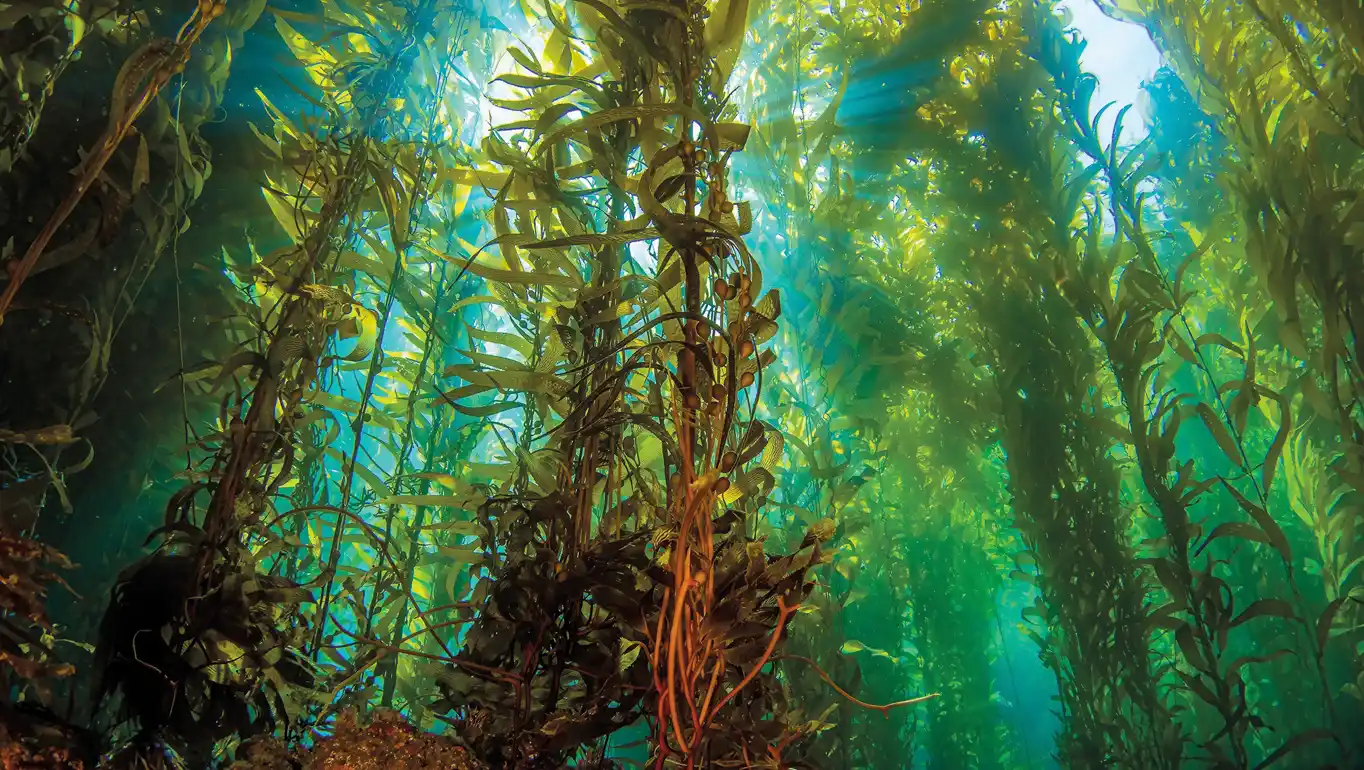It’s a simple solution that I came upon when I began researching, Cool Food: Erasing Your Carbon Footprint One Bite at a Time, the bestselling book that I co-authored with Academy Award-winning actor Robert Downey, Jr., and it’s a weird fact that has stuck with me as one of the most impactful individual climate actions we each can take.
Seaweed is 20 times more effective than land-based plants and trees for keeping the leading greenhouse gas, carbon dioxide, from floating in the air and warming global temperatures. Airborne CO₂ attracts, captures and holds the sun’s energy; heat. Trap it or bury it, and temperatures cool.
Growing more seaweed would keep more CO₂ buried in the oceans, Earth’s largest carbon storage facility. We can encourage this by increasing our consumption, prompting higher demand that urges more supply. The result is a massive environmental benefit. It is estimated that if we grew nine percent more seaweed in the ocean by covering an area of the sea that size, all of the CO₂ produced annually by us humans could be taken out of the atmosphere and held beneath the sea surface.
To be sure, that’s no small feat. But every incremental step toward that goal is a huge leap for the planet. We need these kinds of moonshots if we are to mitigate climate change in any formidable way. Governments and public-private sector partnerships can and should encourage this.
We already know that most of the planet’s carbon (93%) is locked up in various forms in our ocean systems. Oceans are our biggest facilitator of photosynthesis, the process that gives us the oxygen we breathe. When carbon dioxide is gobbled up by plants, they filter it through their cells along with water and sunlight, converting the mix into glucose, or sugar, that is used so they can survive and grow, and respire oxygen—to our benefit.
The marine plant environment is so good at this natural process that more than half of all the Earth’s oxygen is made this way. In other words, every other breath we take is oxygen brought to us by ocean photosynthesis. Seaweed, in its various forms, is the main engine for making this happen. Which is why we need to build more demand around the globe for, let’s call them, vegetables of the sea.
There are thousands of types of edible seaweed that are largely put into three categories: red seaweeds, brown seaweeds, and green seaweeds.
Darker-colored seaweeds are found deeper in the ocean and capture and store the most carbon dioxide, while lighter-colored seaweeds contain the least CO₂ and float closer to the surface.
Red and brown seaweeds are consumed most as food. Think the purplish Nori wrapped around the rice for your sushi, or the brownish Wakame in your miso soup, or the blackish Hijiki in your stir-fry.
No matter what the color or kind, the West hasn’t had much appetite for seaweeds. In Asia, seaweeds are a food staple and account for as much as 20% of people’s daily meals. Conversely, in the United States, seaweed isn’t even listed among common food ingredients. And it’s no wonder: only 57% of all Americans have even tried eating seaweed once. That said, more people seem to be open to having it.
Whole Foods, the grocer with stores in the U.S. and Europe, lists seaweed as one of its top trending food items, and independent researchers estimate sales will grow into the next decade as more people become aware of it as an option for plant-based meals. Note, like many climate solutions, a comprehensive awareness and education mission is duly needed to get more people onboard with eating seaweed. To that end, I have created a communications program to pique interest.
Asia produces 98% of edible seaweed for the world. Meanwhile, North America and the North Atlantic have some of the most ideal conditions to grow more seaweed. There’s ample opportunity for seaweed farms to prosper. And, while a few have, they aren’t at any kind of scale. Seaweed farms off the coasts of North America, for example, account for less than one percent of worldwide seaweed production.
Seaweed isn’t just for our mouths either. Incorporating it into cattle feed can lessen the methane gas cows produce. Methane is another greenhouse gas harmful to the climate. And in the agricultural industry, cattle produce it most with their burps.
But before seaweed can really take off as a food trend, it really needs a new name. The word ‘weed’ doesn’t exactly suggest tastiness.
Kelp has a nice ring to it. Even though it’s a particular kind of seaweed, there’s a case to be made for turning kelp into an umbrella term. After all, seaweed in any form is technically algae, and that sounds even worse than something with the word ‘weed’ in it.
Kelp could be the ocean version of kale. And we all know how popular kale has gotten.
We all eat. We can turn that simple and necessary act into a superpower to do well and good for ourselves as well as the planet. Ain’t that cool.



